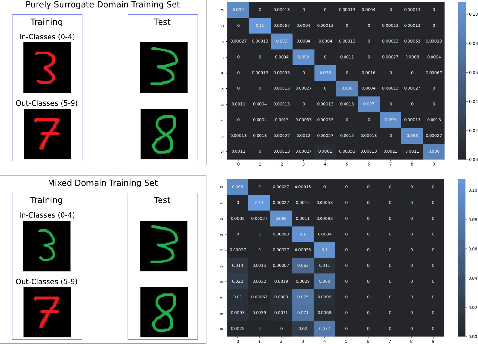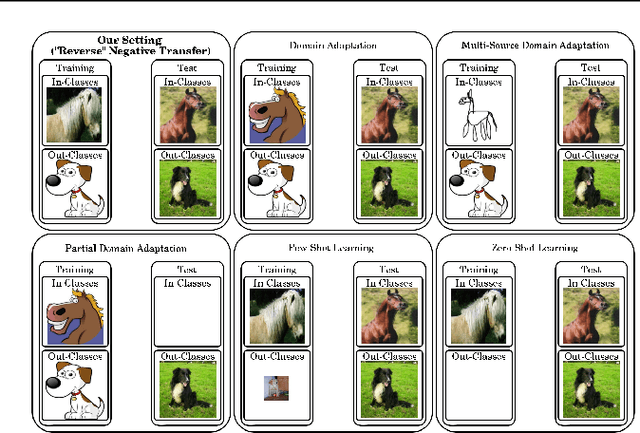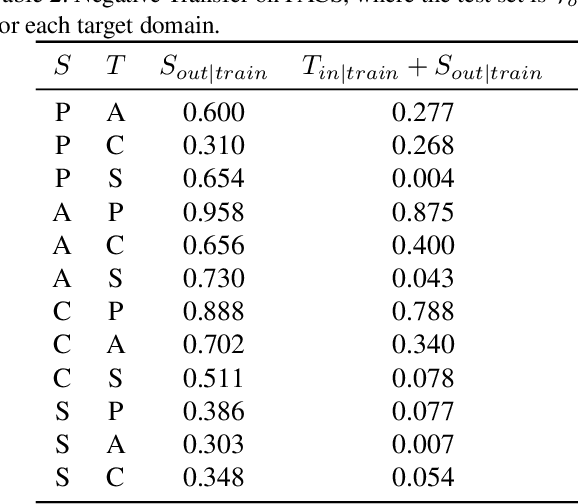Liam Packer
Target Domain Data induces Negative Transfer in Mixed Domain Training with Disjoint Classes
Mar 02, 2023



Abstract:In practical scenarios, it is often the case that the available training data within the target domain only exist for a limited number of classes, with the remaining classes only available within surrogate domains. We show that including the target domain in training when there exist disjoint classes between the target and surrogate domains creates significant negative transfer, and causes performance to significantly decrease compared to training without the target domain at all. We hypothesize that this negative transfer is due to an intermediate shortcut that only occurs when multiple source domains are present, and provide experimental evidence that this may be the case. We show that this phenomena occurs on over 25 distinct domain shifts, both synthetic and real, and in many cases deteriorates the performance to well worse than random, even when using state-of-the-art domain adaptation methods.
 Add to Chrome
Add to Chrome Add to Firefox
Add to Firefox Add to Edge
Add to Edge